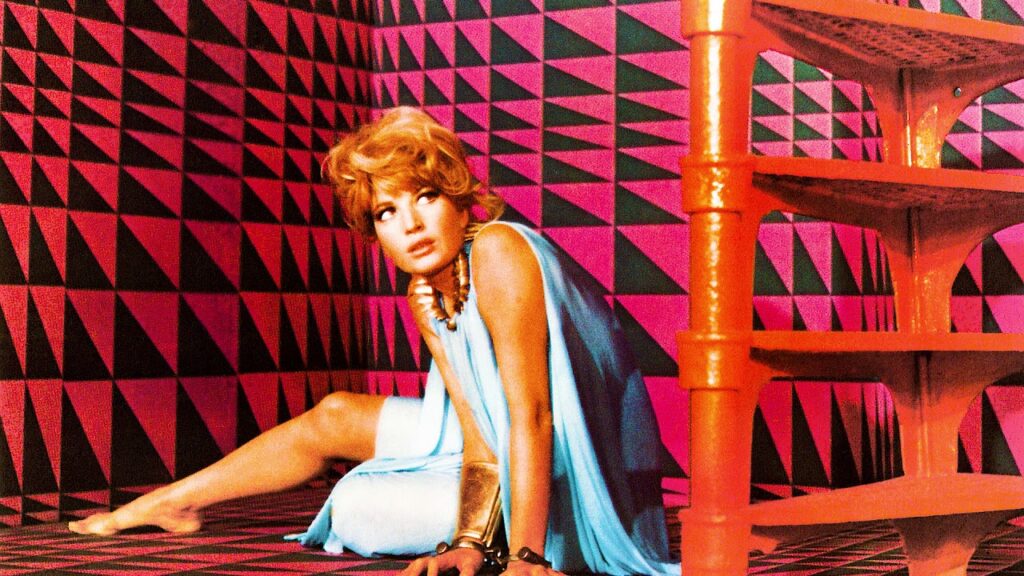
Joseph Losey’s film Modesty Blaise (1966) is the cinematic pinnacle of swinging London culture in the sixties. It’s a film that in turns is campy, reflexive, “mod”, satirical, and all spectacle. Modesty Blaise, though based on one of the most influential comic strips of all time, is really a dissection of the James Bond franchise and its accompanying youth culture (although much hipper). Losey reimagines Modesty (Monica Vitti) and her sidekick Willie Garvin (Terence Stamp) as heroes befitting the deconstructionist Pop cinema of Jean-Luc Godard. By inserting these protagonists into a quasi-007 milieu Losey transforms the source material into a Brechtian cabaret of sights and sounds.
Unpretentious, unassuming and utterly dedicated to fun (much like Brecht’s Baal), Modesty Blaise is Pop Art in moving pictures. That said, there is a narrative at the core of the film that gives Losey a structure around which to build his cavalcade of plastic delights. Modesty and Garvin are contracted to secure stolen diamonds from the criminal mastermind Gabriel (Dirk Bogarde) and his psychopathic killer mistress Mrs. Fothergill (Rossella Falk). Of course the heroes win the day with an impromptu musical number, but the journey to this final moment of euphoric victory is a long, convoluted and nonsensical one. Yet this appears to be the point. Almost every super-spy movie made in the sixties is more concerned with sex and violence than with narrative cohesion. Anyone who has seen Thunderball (1965) knows that it’s perfectly acceptable for these films to be completely dull as well.
Losey’s film practically begs the viewer not to take it seriously and instead embrace its metaphysical joke. Modesty Blaise isn’t really an adaptation of Peter O’Donnell’s comic at all. Besides retaining the names of a few characters and some vague details regarding their backstories, Modesty Blaise employs the comic as source material simply to have a base from which to launch its attack. The narrative structures and themes of the strip coupled with its remarkable popularity at the time in England meant that Losey wouldn’t be burdened with mountains of exposition.
Despite the astronomical number of divergences between the film and the comic Modesty Blaise is still one of the great comic book movies of all time. The genre of comic book films may be a recent development but it can still include older films that fit a certain criteria; much in the same way that genre terms such as Film Noir came after the fact. Obviously the primary criteria is that the film be based, no matter how loosely, on a comic. In my mind, however, the most important criteria isn’t about origins but about style: does the movie look like a comic come to life?
Modesty Blaise doesn’t look a thing like Jim Holdaway’s illustrations but it does look a lot like the art in American comics published in color at the time. In terms of visual aesthetics Modesty Blaise draws on the works of such notable comic book artists as Jim Steranko and Jack Kirby. Losey’s interests are more in the vein of cultural self-reflection than in straight adaptation so his choice to open up the film in this way makes sense. In many respects Modesty Blaise is a kin to Batman (1966-68) and the imitators that it inspired. Unlike the comic book movies we see today which, on an aesthetic level, have more in common with daytime soap operas than with comic books Modesty Blaise is a film obsessed with its visual style.
